|
Topics:
At A Glance:
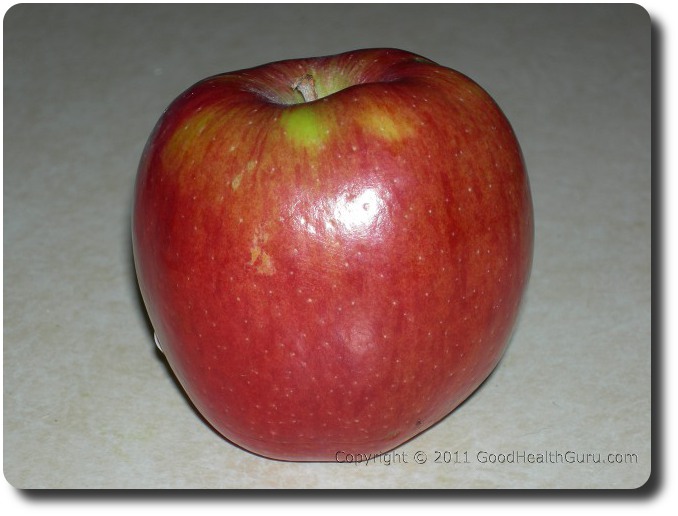
- Food Overview
- Many health problems stem back to food habits
- The human body is not designed to eat processed or "convenience" foods
- Proteins, Fats, Carbohydrates
- What we call "meat" is mainly protein
- Several plant products are also proteins
- Various proteins are made from differing proportions of amino acids
- Nine (9) amino acids cannot be synthesized and must be eaten
- We should eat at least 0.36g of protein per pound of body weight daily
- Fats in our bodies are triglycerides
- Triglycerides are either saturated or unsaturated
- Saturated fats are very rigid and do not flow easily
- Unsaturated fats are more liquid and less likely to clog openings
- Unsaturated fats are either mono-unsaturated or poly-unsaturated (poly is even more liquid)
- Hydrogenated fats are artificial and not easily digested by the body
- Hydrogenated fats raise blood triglyceride levels, lower good cholesterol, and raise bad cholesterol
- Carbohydrates are the primary energy source for our bodies
- There are both simple and complex carbohydrates such as sugars or starches
- Refined (processed) carbohydrates are too easy to over-eat because the natural fibers have been removed
- High Fructose Corn Syrup (HFCS) is a manufactured (not-natural) product
- HFCS is processed by the liver which allows us to over-eat these calories without noticing
- HFCS raises blood triglycerides and bad cholesterol (which then lowers good cholesterol)
- HFCS on a regular basis dramatically increases chances of adult onset diabetes
- HFCS causes depletion of several important mineral from the body
- Vitamins, Minerals
- Vitamins are nutrients our bodies need in small amounts but typically cannot manufacture on their own
- They are either fat or water soluable
- Fat soluable vitamins can be stored which makes it possible to get too much of them
- Vitamins assist hormones, enzymes, and antioxidant processes within the body
- Circumstances which place high stress on the body can rapidly deplete our vitamin levels
Food Overview:
 Well, let's face it; we all love to eat! So many tastes... so little time!!! Unfortunately, we do not always make the best of digestive decisions, and the next thing we know we have heart burn, intestinal gas, or worse -- a clogged artery with a heart attack or stroke looming on the horizon, and that is where the problem starts... or at least it seems to.
Well, let's face it; we all love to eat! So many tastes... so little time!!! Unfortunately, we do not always make the best of digestive decisions, and the next thing we know we have heart burn, intestinal gas, or worse -- a clogged artery with a heart attack or stroke looming on the horizon, and that is where the problem starts... or at least it seems to.
In reality though, these problems we experience today are really symptoms of a deeper issue we began fostering, usually unknowingly, a long time back, but in order to understand how this relates to our diets and how nutrients affect the human body, we need to first understand what food truly is. And to answer this question, we need to have a brief look at part of the history of the human species.
There are actually three interrelated aspects of importance here: | 1) Recorded history makes it very clear contemporary human beings have been around for at least several thousand years. | | 2) Modern production, manufacturing, and processing methods -- offshoots of the industrial age -- have only existed for a handful of decades. | | 3) The rate at which humans can genetically adapt to changes in their environment is extremely slow -- many thousands of years. |
With this knowledge, we easily recognize how the design of the human body and what it can tolerate as food are very limited -- limited to substances which are unprocessed and can be found naturally as was the case centuries ago (before modern processing methods existed). This "old-time food" is the food we were born to eat.
In short, if it is processed (in other words, if it did not start out naturally the way you see it now), it is NOT truly food. And if it is NOT truly food, but we consume it anyway, we begin causing problems in our bodies as they attempt to digest it because our bodies are unable to properly handle it; therefore, we need to be extremely careful about consuming things unnatural.
So now let us look at the components in food.
What are proteins:
 Ah... the sweet warmth of a fragrant spring afternoon. The scents of lilacs and tree blossoms are in the air as you fire up the grill to barbecue that boneless hunk of chicken you picked up from the store barely an hour ago. And soon you'll be tasting it -- that first bite of freshly grilled protein. In fact, everything we call meat, along with a host of other products, contains a large quantity of protein.
Ah... the sweet warmth of a fragrant spring afternoon. The scents of lilacs and tree blossoms are in the air as you fire up the grill to barbecue that boneless hunk of chicken you picked up from the store barely an hour ago. And soon you'll be tasting it -- that first bite of freshly grilled protein. In fact, everything we call meat, along with a host of other products, contains a large quantity of protein.
Proteins are large and complex molecules made up of compounds called amino acids. Proteins are defined as different types, and these types have varying levels of the different amino acids. Proteins are found in every cell in the body, and these proteins are provided either by recycling proteins already in the body or by consuming them through diet.
Of the twenty known amino acids, nine of them either cannot be created in sufficient quantity or cannot be created at all by the body. These nine are known as essential amino acids, and they must be eaten.
How much protein do we need -
This begs the question, how much protein do we need to consume daily to keep ourselves running efficiently? The answer is, "it depends upon our activity levels." Fortunately, this can be made simple by following a general guideline of:
|
at least: | 0.36g of protein per pound of body weight (for very sedentary people) |
|
up to: | 0.64g of protein per pound of body weight (for very active people) |
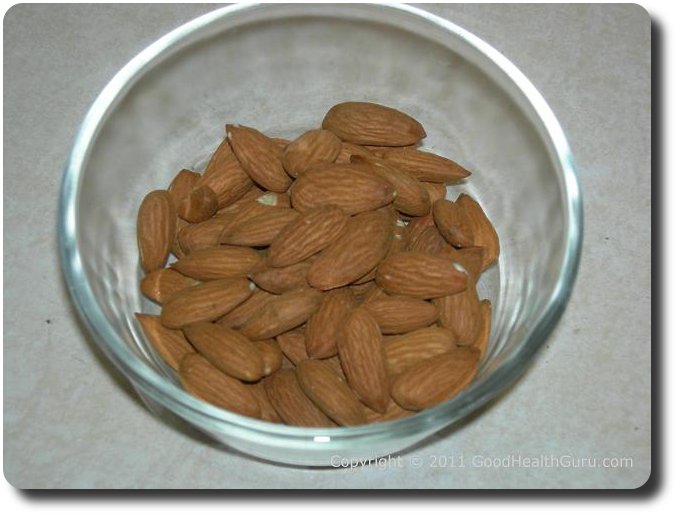
Keep in mind, when considering who is sedentary and who is active, sedentary is someone who primarily sits throughout most of the day and really does not exercise other than walking to or from the vehicle or up the occasional stair case while very active is someone who is on a fairly strenuous weight and cardio training program (or equivalent) involving a good hour or more of heavy weight lifting, running, biking, and so on.
To help us determine healthy proteins for our daily consumption, we see two lists below. The first is a wide variety of proteins ranked in order from highest protein content to lowest content. The second is the same variety of proteins ranked in order of saturated fat content from least to most. Some processed, common items have been included in the lists for comparison's sake.
Proteins and saturated fats are listed in grams (g) per 60g sample size (60g is a little more than 2 ounces):
Protein Content
- Parmesan Cheese (21.28g)
- Swiss Cheese (16.03g)
- Peanuts (15.51g)
- Red Beans (15.14g)
- Sardines (14.77g)
- Turkey Breast [no-skin] (14.77g)
- Pumpkin & Squash Seeds (14.61g)
- Beef [lean] (14.55g)
- Mozzarella, part skim (14.40g)
- White Beans (13.93g)
- Tuna (Bluefin) (13.88g)
- Chicken Breast (13.83g)
- Yellowtail (13.77g)
- Almonds (13.24g)
- Venison (13.07g)
- Wild Rabbit (12.97g)
- Black Beans (12.89g)
- Pinto Beans (12.85g)
- Shark (12.59g)
- Trout (12.36g)
- Shrimp (12.08g)
- Salmon (11.80g)
- Swordfish (11.78g)
- Veal (11.61g)
- Buffalo (11.20g)
- Tempeh (11.08g)
- Mahi Mahi (11.01g)
- Flax Seeds (10.98g)
- Cod (10.60g)
- Lamb (10.44g)
- Scallops (9.98g)
- Walnuts (9.14g)
- Eggs (Chicken) (7.53g)
- Brown Rice (4.77g)
- White Rice (4.28g)
- Mushrooms (1.85g)
|
Saturated Fat Content (low to high))
- Mushrooms (0.03g)
- Red Beans (0.04g)
- Scallops (0.05g)
- Cod (0.08g)
- White Rice (0.11g)
- Mahi Mahi (0.11g)
- Turkey Breast [no-skin] (0.13g)
- White Beans (0.13g)
- Pinto Beans (0.14g)
- Chicken Breast (0.20g)
- Black Beans (0.20g)
- Shrimp (0.20g)
- Brown Rice (0.35g)
- Wild Rabbit (0.41g)
- Shark (0.56g)
- Salmon (0.58g)
- Swordfish (0.65g)
- Trout (0.68g)
- Tuna (Bluefin) (0.75g)
- Yellowtail (0.76g)
- Sardines (0.92g)
- Tempeh (1.33g)
- Veal (1.68g)
- Eggs (Chicken) (1.85g)
- Venison (2.02g)
- Flax Seeds (2.24g)
- Almonds (2.38g)
- Beef [80% lean] (3.65g)
- Walnuts (3.68g)
- Buffalo (4.08g)
- Peanuts (4.13g)
- Lamb (4.80g)
- Pumpkin & Squash Seeds (5.16g)
- Mozzarella, part skim (6.02g)
- Parmesan Cheese (9.77g)
- Swiss Cheese (10.59g)
|
What are Fats:
 So there you are, sitting with a plate of smokey bacon in front of you, and all throughout the marbled slices are random segments of reddish and whitish chewiness. Those whitish portions are fat -- or at least one type of it. In fact, fat is a rather broad category covering compounds called lipids though fat as we know it is really one grouping of lipids called triglycerides (they are literally named for the three fatty components attached to a central molecule). Triglycerides are available either saturated or unsaturated.
So there you are, sitting with a plate of smokey bacon in front of you, and all throughout the marbled slices are random segments of reddish and whitish chewiness. Those whitish portions are fat -- or at least one type of it. In fact, fat is a rather broad category covering compounds called lipids though fat as we know it is really one grouping of lipids called triglycerides (they are literally named for the three fatty components attached to a central molecule). Triglycerides are available either saturated or unsaturated.
What's the Difference -
There are only three (3) elements which make up triglycerides: carbon, hydrogen, and oxygen, and the way carbon operates, it likes to have four other atoms attached to it. When it has all four, it is considered saturated, but when it is missing one or more potential attachment, it is unsaturated, and an unsaturated compound is more "loose" -- less rigid -- so unsaturated fats tend to flow better.
Typically when we see a liquid fat at room temperature (olive oil, for example), it tends to be heavily unsaturated while a solid fat at room temperature (e.g. butter) is primarily saturated. Furthermore, unsaturated fats are primarily made in plants while saturated fats are primarily from animals.
So what's this deal with mono or polyunsaturation -
Now, fats have many carbon atoms attached to each other forming the central spine of the molecule, and when just one of these carbons is missing a potential fourth attachment, the fat is said to be monounsaturated; however, if it is polyunsaturated, then two or more of these carbon "spine" atoms are missing potential fourth attachments. Think of it like missing one (or more) of our ribs.
What about hydrogenation -
It is possible to manually manipulate the saturation of fats through chemical processing. When this is done, unsaturated carbon atoms begin to pick up those missing attachments by adding extra hydrogen atoms into those slots (hence the term hydrogenation). This creates an unnatural product which is usually more shelf-stable in the store because the various bacteria and fungi are unable to feed on them and, unfortunately, neither are our bodies able to feed on them. They cannot be broken down in the manner a biological body expects to break them down so, at best, they are only partially metabolized. The resulting negative effect chain reaction typically raises our blood triglyceride levels and also lowers our HDL (good) cholesterol levels which, in turn, raises LDL (bad) cholesterol in the blood.
Regarding the Balance Between Omega-3 and Omega-6 oils -
There are three (3) fatty acid groups we are interested in from a dietary perspective (although two are of particular importance): omega-3's, omega-6's, and omega-9's. Both the omega-3 and omega-6 groups have a primary form or precursor molecule from which others in the group are formed, and it is these primary forms which are essential to us because we cannot manufacture them on our own.
For the omega-3 group, the primary acid is the polyunsaturated alpha linolenic acid, and its two most important metabolic forms are docosahexaenoic acid (DHA) and eicosapentaenoic acid (EPA). These acids are very anti-inflammatory for our bodies. Conversion from the alpha form into either DHA or EPA is still a bit challenging for the body so it is important that we get all three of these daily!
Within the omega-6 group, the primary acid is the polyunsaturated linoleic acid which our bodies then convert to gamma-linolenic acid (GLA) and subsequently to arachidonic acid (AA). While linoleic acid and arachidonic acid tend to be very inflammatory within the body, gamma-linolenic acid is beginning to show promise as an anti-inflammatory fatty acid.
The last group is the omega-9 group, and it has several fatty acids within -- all of which are abundantly found in nature. Furthermore, our bodies can manufacture the omega-9's; therefore, we are not reliant upon diet to get them. The most notable is the monounsaturated oleic acid. It is unclear whether or not they have an anti-inflammatory effect on the body; however, they do not seem to be inflammatory.
In the western diet, we typically eat too much inflammatory omega-6 oils, and we eat very few of the anti-inflammatory omega-3's. Current evidence is suggesting this as a primary factor in the development of our many chronic inflammatory-based diseases (e.g. diabetes, heart disease, psoriasis, and other skin woes); therefore, every attempt should be made to consume more of the anti-inflammatory omega-3 (particularly helpful) as well as omega-9 oils (e.g. walnut oil, olive oil, high-oleic sunflower oil, or high-oleic safflower oil) rather than their more inflammatory omega-6 counterparts (linoleic or hydrogenated sunflower oil, linoleic or hydrogenated safflower oil, corn oil, hydrogenated corn oil, soybean oil, hydrogenated soybean oil, or partially hydrogenated soybean oil). We should strive to keep the dietary omega-3 to omega-6 ratio at or below 1:4 each day.
What are Carbohydrates:
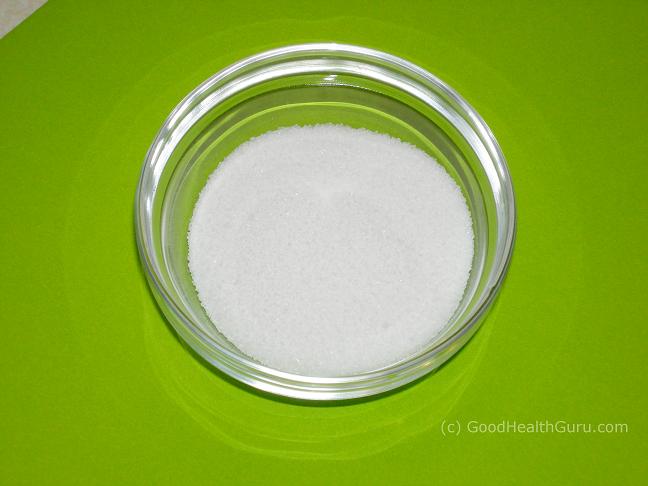 Carbohydrates are the primary source of energy for our bodies. Without them, we cannot live, and carbohydrates are produced by plants. This means it was always essential (and still is essential) for us to eat plants to survive.
Carbohydrates are the primary source of energy for our bodies. Without them, we cannot live, and carbohydrates are produced by plants. This means it was always essential (and still is essential) for us to eat plants to survive.
Classifications -
The classification of carbohydrates is very broad including a vast number of different compounds. Many people become confused when they hear the term and assume it to mean sugar, or more specifically, table sugar. While it is true common table sugar is one carbohydrate, the spectrum is wide.
On the simple end we have the sugars which are divided into two classes: mono saccharides and disaccharides. On the complex end we have much larger polysaccharides like cellulose and starch. It is only the monosaccharides which can enter the blood stream (a process handled by the intestines) so any polysaccharides must first be broken down in order to be used. Some polysaccharides, like cellulose, simply cannot be digested by the body. We think of them as fibers that keep things moving smoothly through the intestines -- keep them from clogging up.
So, are Carbohydrates Bad? -
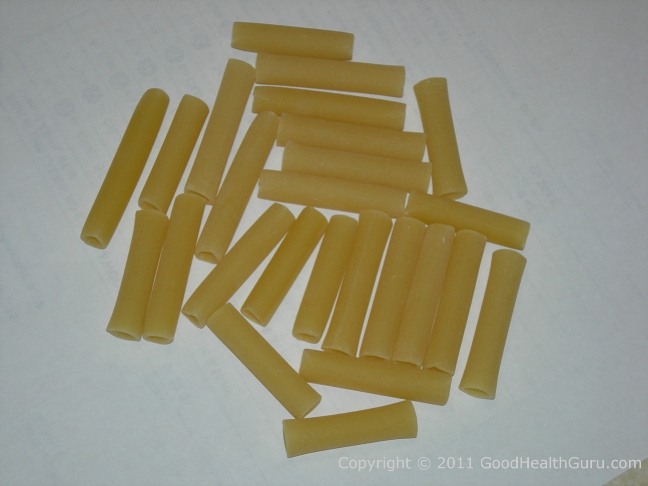 Not at all. As mentioned above, they are absolutely essential to keep us alive, and they should make up the majority of our diets between the three components (proteins, fats, and carbohydrates). The problem comes in when we eat refined carbohydrates. The refining process strips away most of the undigestible bulk that would normally be used by our bodies to allow our stomachs to tell us we are full. This lets us to over-eat from an energy (calorie) perspective because we can pack more carboyhdrates into the same stomach space when the fiber is no longer attached to it. These excess carbohydrates enter the blood, and the liver converts them to glucose (or they may already enter the blood as glucose), but as the glucose loads up and becomes excess, the liver changes its approach and combines some of the glucose molecules together to form glycogen so it can be stored for later use, and therein lies the problem for too many of us! Not at all. As mentioned above, they are absolutely essential to keep us alive, and they should make up the majority of our diets between the three components (proteins, fats, and carbohydrates). The problem comes in when we eat refined carbohydrates. The refining process strips away most of the undigestible bulk that would normally be used by our bodies to allow our stomachs to tell us we are full. This lets us to over-eat from an energy (calorie) perspective because we can pack more carboyhdrates into the same stomach space when the fiber is no longer attached to it. These excess carbohydrates enter the blood, and the liver converts them to glucose (or they may already enter the blood as glucose), but as the glucose loads up and becomes excess, the liver changes its approach and combines some of the glucose molecules together to form glycogen so it can be stored for later use, and therein lies the problem for too many of us!
What is the Problem with High Fructose Corn Syrup (HFCS)? -
Ooo, the power of a cold soda on a hot day -- very tasty stuff! But I am glad you asked this question because the story is rather interesting! The trouble here begins a few decades back when it became cheaper for manufacturers to mix soda with HFCS instead of that good old sugar (sucrose) from ages of old, and that is when the flavor of our cold sodas changed perceptibly, but it is not the flavor that is our biggest problem; it is the fructose, or rather, the HFCS.
To start with, fructose is often thought of as "fruit sugar" because it is found readily in many fruits, and it also comes in a number of vegetables as well. It is a monosaccharide, and when it is occurs naturally, it is usually fairly well balanced with glucose -- approximately 50% fructose to 50% glucose. Corn syrup by itself, however, is not naturally occurring. It is made from corn starch and enzymes which break the starch down into mostly glucose. Heat is then applied, and the syrup is created. To keep the syrup relatively shelf-stable, corn syrup is stored as a reasonably balanced mixture of destrose, fructose, glucose, and malt.
High fructose corn syrup is also a non-naturally occurring manufactured product. In this case, the corn starch is subjected to some extra steps which cause the starch to be converted to glucose and finally fructose. Then, in order to achieve a ratio of fructose to glucose for HFCS, straight glucose is added back into the mixture. Any ratio could be concocted, but there are three in common use today ranging from 90% fructose / 10% glucose down to 42% fructose / 52% glucose (with 6% other sugars). The result of this unnatural balance is some strange effects on the body which start with the fact it is metabolized by the liver. The pancreas does not become involved then so it never gets the opportunity to release extra insulin (as it normally would) to compensate for the additional sugar in the blood stream. Furthermore, leptin, which would normally be released as we eat and fill up, never gets released either. Since leptin's job is to help curb appetite, this becomes a problem since more HFCS can be consumed without noticing. Without the normal stopping mechanism present, we can continue to consume it all day long and easily over-eat these calories.
But there are other issues as well. At 2010 study conducted at Princeton University indicated the likelihood that a diet high in HFCS causes consistently higher blood triglyceride levels and LDL (bad) cholesterol. These factors dramatically increase the risk of adult-onset diabetes. HFCS also tends to increase physiological aging, and it seems to deplete important minerals in the body. Since magnesium and calcium are two of those which are depleted, this increases the risks of developing osteoporosis.
Vitamins:
Vitamins are organic nutrients which our bodies need in small quantities, but in most cases, we cannot manufacture them on our own (or cannot manufacture them in sufficient quantities). Their functions in the body vary. Some are antioxidants. Some aid the work of enzymes. Others act much like hormones.
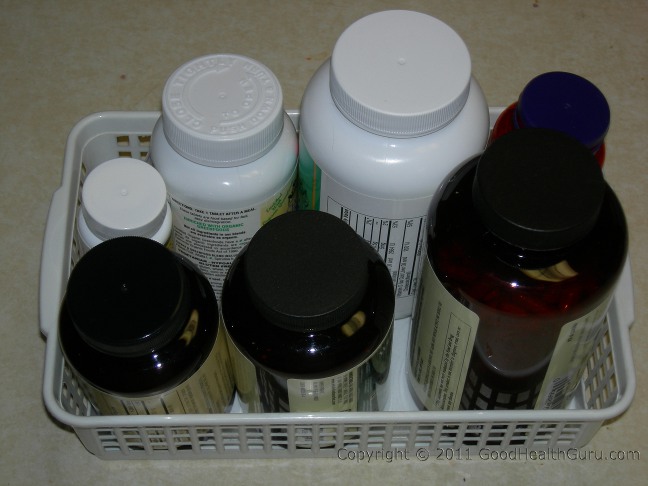
Vitamins are classed either as fat soluable or water soluable. Though the compounds classified as vitamins vary by species, we humans recognize (need) thirteen such compounds. Four of these, vitamins A, D, E, and K, are fat soluable while the remaining nine, the B-complex vitamins along with vitamin C, are water soluable. This is of particular importance because fat soluable vitamins are stored in the body until needed (or until depleted), but water soluable vitamins are generally in and out and cannot effectively be stored by the body for later use.
Many situations, such as high stress, chronic smoking, or heavy, long-term drinking of alcoholic beverages, will cause rapid depletion of vitamins; therefore, particular care needs to be taken in these circumstances to maintain adequate vitamin intake.
It is, however, possible to overdose on vitamins, and this needs to be considered as well. In fact, the fat soluable vitamins are particularly susceptible to overdose since they can be more readily stored for long periods in the body.
Minerals:
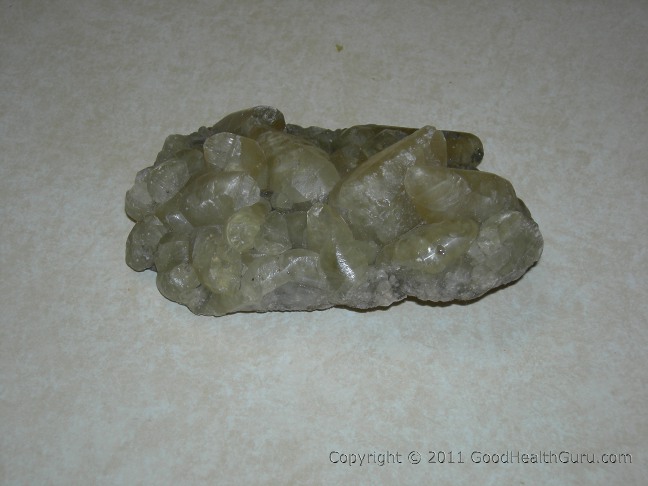 Minerals are nutritional elements our bodies need to keep themselves in full repair. Our bodies are made up of a wide variety (e.g. calcium, selenium) which are often lost through various systemic processes resulting in our need to replace them throughout the day. In most cases, trace amounts are sufficient. In fact, many, such as iron, are dangerous in large quantities.
Minerals are nutritional elements our bodies need to keep themselves in full repair. Our bodies are made up of a wide variety (e.g. calcium, selenium) which are often lost through various systemic processes resulting in our need to replace them throughout the day. In most cases, trace amounts are sufficient. In fact, many, such as iron, are dangerous in large quantities.
Common minerals our bodies need are seen here along with basic daily guidelines of recommended intake values for normal adults as defined by both the US Dietary Reference Intakes (US DRI) and the World Health Organization (WHO):
| Name | US DRI | WHO | Best Sources |
| Calcium8 | 1000 mg | 750 mg | Sesame, sardines, almonds, dark green veggies, white red black pinto beans |
| Chromium | 20 - 35 µg1 | Unavailable | |
| Copper8 | 700 µg | Unavailable | |
| Iodine | 150 µg | 150 µg | |
| Iron | 8 or 18 mg2 | 9.1 or 19.6 mg2 | |
| Magnesium | 255 - 350 mg | 220 - 260 mg | Seeds (squash, sesame...), tree nuts (almonds...), white, pinto, black, and red beans |
| Manganese | 1.8 or 2.3 mg3 | Unavailable | |
| Molybdenum | 45 µg | Unavailable | |
| Phosphorous | 700 mg | 700 mg | Seeds, parmesan, swiss, cheddar, provolone, sardines, almonds, pinto, red, and black beans, walnuts |
| Potassium | 4700 mg4 | 4700 mg4 | White, black, pinto, and red beans, seeds, tree nuts, raisins, prunes, mushrooms, salmon, ginger, mahi mahi, red snapper, cod, garlic |
| Selenium | | 25 - 34 µg5 | |
| Sodium | 1500 mg6 | 1500 mg6 | Sea salt, seaweed, seafood, beet greens, swiss chard |
| Zinc8 | 8 or 11 mg7 | 4.9 or 7 mg7 | |
1 This value is not a recommendation but is an amount considered adequate to meet normal metabolic requirements. For adult men to age 50, it is 35 µg daily after which it drops to 30 µg daily. For adult women to age 50 it is 25 µg daily after which it drops to 20 µg daily.
2 The US recommendation for iron is just 8 mg daily for adult men but 18 mg daily for women between the ages of 19 and 50 after which it drops to 8 mg daily for women. The World Health Organization maintains a slightly higher recommendation at 9.1 mg per day for adult males and 19.6 mg per day for adult females.
3 The value for manganese is not a recommended amount but rather an amount considered to be adequate to meet normal metabolic requirements. 1.8 mg daily is considered to be adequate for adult women, and 2.3 mg daily is considered to be adequate for adult men.
4 There is not an established guideline from either the US Dietary Reference Intake or the World Health Organization; however, studies have shown how greater levels of potassium help regulate blood pressure, reduce negative effects of excess dietary sodium, neutralize acids in the blood, prevent strokes, and prevent kidney stones; therefore, the adequate intake level has been set to 4700 mg (4.7g) for adults. It should be noted that it is challenging to get this much potassium each day.
5 According to the WHO, adult men need 34 µg of selenium daily through age 65 after which the recommendation drops to 33 µg daily. Adult women need 26 µg daily through age 65 after which the recommendation drops to 25 µg.
6 There is really no established guideline on how much sodium is needed so the number, 1500 mg, is presented to us based upon data generated in studies which indicated normal growth and body function.
7 The 11 mg daily US DRI recommendation is for adult men, and 8 mg daily US DRI recommendation is for adult women while the 7 mg daily WHO value is an average consensus of moderately bio-available zinc for adult men with the 4.9 mg daily WHO value being an average consensus of moderately bio-available zinc for adult women.
8 Zinc competes with both calcium and copper in the body. If taking a zinc supplement, it should always include copper with the ratio very close to seven (7) parts zinc for every one (1) part copper. With calcium supplementation, there should be significant spacing (at least two to three hours) between when calcium supplements and zinc supplements are taken. Otherwise, the calcium can cause the zinc to not be absorbed.
|

